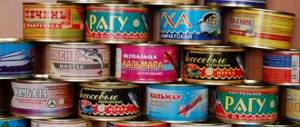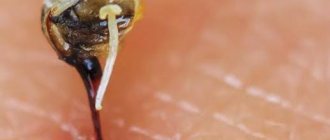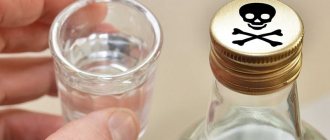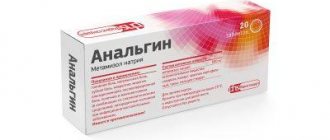It's no secret that we are living during a worldwide epidemic of drug addiction - at a time when drugs have become accessible and dangerous as never before, at a time when neither local authorities nor the international community are able to stop the frantic flow of drugs. , the range of which is updated almost daily. Due to the appearance on the market of new synthetic drugs, which today are completely unstudied and, accordingly, do not have an effective antidote, the mortality rate from overdoses, which often occur even after a single use, has increased significantly. Quite often, victims do not even have time to be taken to the hospital or to the nearest place where they could be provided with competent assistance, and fellow users are often not even able to call an ambulance, let alone provide assistance. In this article, we decided to provide you with brief instructions on providing emergency first aid to people who are showing signs of a drug overdose. Regardless of the type of psychoactive substances and the nature of their effect on the human body, assistance in case of overdose has the same algorithm and sequence of its provision.
The effect of opiates on humans
Opium alkaloids act on specific opiate receptors, causing powerful pain relief. This is their therapeutic effect, used to relieve severe pain.
In addition to relieving pain, the drug creates euphoric experiences in a person:
- A surge of many pleasant sensations.
- Relaxation.
- Unreasonable joy.
Phases of anesthesia:
- In the language of drug addicts - “arrival”. The first sensations occur within a minute after taking the drug. The skin of the face and neck area turns red and the mouth becomes dry. The pupils of the eyes narrow. The surrounding world takes on a joyful coloring and is pleasantly distorted. All negative thoughts gradually go away. Bliss – a “high” – “spreads” throughout the body. The arrival time is about 5-10 minutes.
- The next stage of drug intoxication lasts several hours (up to 9-10). Some drug addicts call it “nirvana” due to the fact that taking a drug focuses a person only on his feelings. It is stationary and practically does not perceive external signals. Drug experience reduces the duration of phase 2.
- The beginning of the formation of abstinence. Manifestations of anesthesia gradually go away, and the patient begins to experience psychophysical discomfort, turning into pronounced and painful sensations called withdrawal. To remove them, you need to receive another portion of the drug.
Symptoms and causes of solvent poisoning
Organic solvents (White spirit, acetates, butyl acetate, gasoline, solvent) are classified according to their degree of volatility. The indicator indicates the rate of evaporation of a substance.
Based on toxicity, low-, medium-, and high-toxic solvents are distinguished. If a substance is highly toxic, but non-volatile, then the likelihood of getting poisoned is extremely low. Low toxic and volatile compounds quickly penetrate the respiratory tract and cause severe pathology.
Solvent 646
The composition includes hydrocarbons and alcohol compounds. It is used in everyday life to form uniform films of paint and varnish products, create a shiny surface, remove paint residues, and wash various tools.
Danger of substance: pungent odor. After application to the material, the substance evaporates. The smell quickly disappears. Working with the substance requires compliance with safety precautions. Close contact of a person with a chemical substance in an enclosed area can result in serious poisoning.
Poisoning by solvent vapors is characterized by rapid loading of the body, the development of serious consequences (bronchitis, pneumonia, respiratory failure), the symptoms of the pathological condition depend on the route of penetration of the substance: inhalation or orally. In the first case, poisoning develops while working with the substance in a closed room, without a mask. In the second, with internal fluid intake (children are more likely to suffer).
If a person has inhaled solvent, one should expect typical signs of pathology: pain in the eyes, excessive tearing, severe continuous coughing, sneezing. Hyperemia of the conjunctiva and nasal passages is objectively detected. After a few hours, the symptoms disappear. The disease enters a latent stage. 2-3 days pass, and problems with the lungs, kidneys, and liver begin. Clinically, yellowing of the skin and sclera and urinary disturbances are observed. Bronchitis, pneumonia, and respiratory failure gradually develop. Throughout the entire period of illness and poisoning, a person feels weak, unwell, lethargic, and drowsy.
If you drink a solvent, pathological symptoms will appear in the digestive and nervous systems. The victim complains of intense pain throughout the abdomen, diarrhea, vomiting streaked with blood, and increased salivation. When toxic compounds are ingested orally, the liver and kidneys suffer. Impairments in coordination and gait appear on the part of the nervous system. Dizziness and headache occur.
Without medical care, a person can die on the third day. The child's body dies even faster.
White Spirit
White spirit poisoning is often observed among workers in the paint and varnish industry. The solvent is a volatile liquid consisting of aromatic hydrocarbons. The product is used to dissolve paints, varnishes, enamels, and vegetable oils.
Poisoning with this substance can occur in three ways:
- Evaporation. A person inhales toxic fumes during prolonged contact with a solvent without appropriate safety equipment. Irritation of the mucous membranes of the upper and lower respiratory tract occurs. The patient begins to cough and sneeze heavily.
- Ingestion of liquid is accompanied by dyspeptic (vomiting, diarrhea), pain (abdominal pain), nephrotic (oliguria, blood in the urine) syndromes. Later, symptoms of heart failure appear.
- Contact of white spirit on the skin does not lead to serious consequences. Dermatitis is rarely observed.
- In case of contact with the eyes, irritation of the conjunctiva develops without damaging the deep structures of the eyeball.
Solvent
Solvent additive for paints and varnishes. Common causes of an acute condition include: ingestion of a solvent through negligence, failure to comply with safety rules. The chemical has the following effects on human internal organs:
- When administered by inhalation or orally, it disrupts the functioning of the nervous system. Victims report dizziness, headache, and fatigue.
- Negatively affects the digestive system. 20-30 minutes after the liquid enters the stomach, repeated vomiting and nausea begin.
- Solvent poisoning leads to the development of atypical pneumonia and obstructive bronchitis.
Dangerous organic solvents are ethyl acetate, butyl acetate; poisoning is accompanied by similar symptoms with the development of severe complications (acute liver and kidney failure).
Why does opiate poisoning develop?
Systematic use of surfactants causes addiction, against the background of which there is a gradual decrease in the depth of euphoria. To achieve the expected effects, the addict tends to increase the dose. In pursuit of a “high,” sooner or later, almost all patients experience an overdose - taking an inappropriately large amount of a psychoactive substance. A situation of intoxication can also be provoked by taking a regular “portion” after an unsuccessful attempt to quit the drug. This problem occurs at the height of withdrawal – withdrawal syndrome.
One of the unusual cases of obtaining an excess amount of a drug is its hidden transportation in packaged form in the stomach or in the lower part of the large intestine.
Questions you need to know the answers to when talking to your doctor
It is important to find out what medicine or drug the patient was taking. If he is awake, ask him, but do it quickly as he may lose consciousness. If the patient is already unconscious, you will need to find a package, container or bottle of pills.
Here is a list of questions that emergency personnel typically ask:
- What medications or drugs was the patient taking? How much did he take? If the medication was in tablet form, how many tablets did the person take and how many milligrams were in each tablet?
- How long ago was the drug taken? Were any other medications, drugs, chemicals, or alcoholic beverages taken with these drugs?
- How old is the patient?
- What are the patient's symptoms?
- Is the patient conscious and breathing?
- Does the patient have any pre-existing medical conditions?
HELP IN OVERDOSE
+79882846124
URGENT CALL!
Symptomatic picture and complaints in acute poisoning with opiate drugs
The toxic effects of psychoactive substances based on opium alkaloids manifest themselves in a specific pattern.
It consists of three leading symptom complexes:
- Depression of consciousness of varying degrees: from stupor to coma.
- Constriction of the pupil even in the dark.
- A sharp decrease in the frequency (bradypnea) and depth of breathing.
Secondary symptoms may be added to the main symptoms:
- Changes in body temperature: decrease with loss of strength and blood pressure, increase with chills, accompanied by headache and hypertension.
- Nausea and bouts of vomiting.
- Cramps.
- Sphincter disorders – urinary retention and constipation/diarrhea.
The fulminant variant occurs with severe dysfunction of the central nervous system. The patient develops an acute type of encephalopathy, pulmonary and cerebral edema. Toxic damage to the heart muscle and disruption of its oxygen supply can cause cardiac arrest.
Opiate intoxication is divided into 4 degrees:
- Easy. The patient is in minor stupor. During the conversation, his speech is slow, his pain threshold is violated. When listening to breathing, shortness of breath is noticeable. The pulse of the peripheral arteries is weakened and rare. Reflexes are reduced, when tracking the neurological hammer, nystagmus is detected - oscillatory movements of the eyeballs when looking to the side. There is a pupillary reaction to light, but it is weak.
- Moderate weight. The patient is in a precomatose state. Consciousness is expressed clouded or absent, reflex reactions are suppressed, but preserved. The pupils practically do not react to light. On examination: the skin is pale with a cyanotic tint, breathing is depressed, blood pressure is low, and convulsions are periodically detected.
- Heavy. A drug addict exhibits all the signs of a severe coma. Consciousness and tendon reflexes are completely absent, as is the reaction to light and the main types of sensitivity. Progressive depression of respiratory function and circulatory disorders develop consistently. At the height of poisoning, the appearance of cerebral edema, respiratory and cardiac arrest may occur. If the patient is not given resuscitation care, he will die within a few hours. Mortality without medical intervention reaches 80%
- Reversal of symptoms. All body functions gradually return to normal over a certain period of time, depending on the degree of poisoning.
Signs of overdose of different types of drugs
Signs of an opiate overdose
An opiate overdose has a fairly pronounced manifestation, so that it is quite difficult to confuse it with a common cold or malaise. Symptoms of an opioid overdose are:
- Severe drowsiness, which makes a person look barely alive;
- Breathing becomes barely noticeable;
- The muscles of the whole body are too relaxed. A person can neither stand nor sit;
- Change in complexion: from pale white to blue. The tips of the fingers and lips also turn blue;
- The skin becomes damp and cold;
- A person begins to have convulsions.
Signs of a stimulant overdose
Signs of an overdose of stimulant drugs (cocaine, amphetamine, etc.) appear as follows:
- Panic;
- Fear of death;
- Moving excitement (a person cannot find a place for himself);
- Increased blood pressure (in some cases, stroke);
- Increased heart rate;
- Strongly throbbing headache, feeling of compression and pain in the sternum;
- Foaming at the mouth;
- Nausea and vomiting;
- Pupil dilation.
Signs of an overdose of spices and salts
The most dangerous of all types of narcotic drugs that exist today are synthetic drugs such as spice and salts. The main symptoms of an overdose of spices and salts are dizziness, weakness, nausea, paleness of the face, a critical increase in pulse rate, pressure surges, loss of consciousness, and vomiting. Often, due to an overdose of spices and salts, a person can have a heart attack or stroke. An overdose is often accompanied by paranoia, hallucinations, tremors and an increased level of anxiety.
Algorithm for providing emergency care for opiate overdose
Once the exact cause of opium alkaloid poisoning has been established, the patient is immediately selected and given therapy.
It includes:
- Intravenous administration of a specific antidote - naloxone.
- Resuscitation measures: artificial ventilation, injections of cardiac and respiratory analeptics, normalization of blood pressure, removal of signs of cerebral edema.
- Infusion-drip detoxification against the background of forced diuresis and the administration of adsorbents. Droppers can be supplemented and combined with hemodialysis, plasmapheresis, and intravenous laser blood purification.
The earlier medical care begins, the better the expected prognosis. It is important to seek help from a drug treatment clinic in a timely manner, without waiting for complications.
Secondary medical education
- General midwife
- Dental assistant
- Dentist
- Dentist
- Dental Technician
- General expert research laboratory assistant
- Blood service laboratory technician
- AIDS service laboratory technician
- Laboratory assistant of forensic biological departments
- Laboratory assistant of forensic histology departments
- Laboratory assistant of physical and technical departments
- Laboratory assistant at chemical and toxicological departments
- Gynecological nurse
- Neonatology nurse
- General practice nurse
- Nurse of the intensive care and anesthesiology departments
- Ophthalmic nurse
- Pediatric nurse
- Physical therapy nurse
- Nutritional Nurse
- Massage nurse
- Care nurse
- Healthy lifestyle nurse
- Tuberculosis service nurse
- Psychoneurological nurse
- Blood service nurse
- AIDS service nurse
- Dental nurse
- Therapeutic nurse
- Physiotherapeutic nurse
- Surgical nurse
- Medical statistician
- Laboratory assistant doctor
- Nurse's assistant
- X-ray technician
- Paramedic laboratory assistant
- Narcology paramedic
- General practitioner
- Paramedic of the public education system
First aid - what's the point?
So, immediately when a drug addict is discovered in a state after an overdose, he should try to regain consciousness. It is also very important to make sure that the person’s airways are clear; if necessary, they should be cleared of foreign objects and vomit, after first laying the victim on a horizontal surface and turning his head to the side. If there is a pulsation, it is important to give the drug addict artificial respiration in a timely manner. If there is no pulse, the person needs to perform an indirect cardiac massage. All these manipulations should be performed either until the victim regains consciousness and begins to breathe normally freely, or until the emergency team arrives.
After bringing the drug addict to consciousness, it is necessary to calm him down so as not to cause panic attacks and not to aggravate the victim’s condition. In this case, all active stimuli are excluded - loud music, bright lights are turned off, the person is asked to inhale deeply and exhale it calmly. It is in the interests of the addict that doctors arrive as soon as possible.











